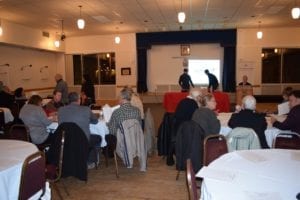Culture of Committee of Adjustment and OMB decision making has changed dramatically in 25 years: MPP Peter Milczyn
Updates:
A March 11, 2018 Toronto Star article is entitled: “How rampant development and poor planning left residents of this Etobicoke neighbourhood stuck in traffic: The Etobicoke neighbourhood of Humber Bay Shores has undergone rapid development in the past two decades, but transit infrastructure hasn’t come with it. The problem only stands to get worse.”
The article refers to the role that OMB has played, in years past, in providing the go-ahead leading to the state of affairs described in the above-noted article.
A recent post is entitled:
Mississauga’s approach to civic engagement stands in stark contrast to the track record for Toronto
A three-part, Feb. 17, 2017 Toronto Star article is entitled: “Contested Development: Many question whether the Ontario Municipal Board should be allowed to continue wielding its unelected power over a city crunched for resources.”
I’ve posted some excerpts at a post entitled:
[end]

MPP Peter Milczyn outlines OMB Review at November 9, 2016 meeting at Long Branch Legion Hall. Jaan Pill photo. Click on the image to enlarge it.
A key quote, from Peter Milczyn, Member of the Provincial Parliament for Etobicoke-Lakeshore, speaking on November 9, 2016, reads:
“And, over the period of 25 years, the laws didn’t change very much, but the culture and the attitude changed dramatically. So, now it’s almost the reverse: ‘Somebody wants to build something. Why should we stop them? Convince us we should stop them. If you can’t convince us, we’re gonna let it go.’
“That’s an oversimplification, but I just want to make that point, that the culture of Committees of Adjustment, and the Ontario Municipal Board, changed in a number of ways. And that could be the topic of a whole other evening, as to why that happened.”
What follows are some back stories related to the OMB Review
On November 9, 2016 I attended a Town Hall Meeting at the Royal Canadian Legion Hall in Long Branch regarding the Ontario Municipal Board (OMB) Review:
final-public-consultation-document-1
The deadline for comments from Ontarians was December 19, 2016. I’m pleased to say that I met the deadline, by sending in my own comments just in time.
In the first 20 minutes of the above-noted Town Hall event, MPP Peter Milczyn outlined the OMB Review.
Conversations, before the meeting begins
I learned much of value at the November 9, 2016 OMB Review Town Hall in Long Branch. I recorded the entire event; the current post focuses on the first part of the evening, during which Peter Milczyn provided a great overview of land use planning policies in Ontario. Reading the transcript of his talk has served really well, to refresh my memory of his talk, and to reflect upon its contents.
Before the meeting got underway, I listened in on conversations. I asked permission, to record what residents were talking about. In the following quotations, where residents are speaking, I’ve paraphrased some of the content.

Dorothy, who appeared at the Committee of Adjustment on November 3, 2016, lives just east of 14 Villa Road. She has lived at her house for 74 years – three-quarters of a century – as she has explained in a widely viewed online video entitled: Message from Dorothy, age 97, to the Etobicoke-York Committee of Adjustment, October 2016. Jaan Pill photo. Click on the image to enlarge it.
Changes
One Long Branch resident (a retired commercial real estate developer) was explaining, to another resident, that at a previous time, if you got enough people to show up, the Committee of Adjustment would be persuaded to focus, in its deliberations, on the Official Plan. Now, he said, it’s completely different. Now, you can’t tell which way it’s going to go. There could be a ruling, favourable to residents, where the Committee of Adjustment follows the Official Plan. Or there could be a ruling, where the Official Plan is ignored.
Winging it
“Now, they just seem to wing it, and whatever on that day they feel like, that’s the way they’re going.”
That is to say, rather than following the Official Plan, the Committee of Adjustment, in accordance with its own interpretation of its mandate, is making things up as it goes, without reference to the Official Plan or the relevant City By-Laws.
It has, as I understand, not always been thus.
A previous post of relevance, regarding this topic, is entitled:
In the past, the Long Branch resident commented, the Official Plan was a three-way plan involving the residents, the developers, and the different levels of government. The other two are still involved, the resident said, but “the ratepayers are kind of pushed aside, because they [from the perspective of the Committee of Adjustment] know nothing, or are just a nuisance.”
Ontario Highway Act c.f. Committee of Adjustment
The resident drew upon an analogy with the Ontario Highway Act. “You have to obey the law,” he said. “If you’re speeding, you may get stopped. If you’re at 120, you may be required to explain your actions. If you’re stopped at 220, you car’s going to be taken away.”
At the Committee of adjustment, he noted, “We’re getting variances for 100, 200 percent, and they’re being approved.” This is not Minor, he said. ‘Compare that to speeding with your vehicle.’
“The rule of thumb for 50 years was that, if it’s 10 percent over, ‘We’ll discuss it.’ But if you took in the drawings, and it was more than that, you were told to work on it. They used political language. They’d say, ‘Could you get it a little more presentable?’

3D rendering by Mike Smith of Gateway Data and Surveillance Systems, Inc. showing a General Visual Representation of the proposed 14 Villa houses as they would appear at 10:00 am in the month of March. Dorothy’s house is to the right of the two houses that are proposed in the severance application that was approved by the Committee of Adjustment on November 3, 2016. The decision has been appealed to the Ontario Municipal Board. Click on the image to enlarge it.
“But that is no longer done. They accept any application, no matter how ludicrous it seems to be. It’s completely changed in the last few years.”
The resident assumes it’s going to continue. “It’s a very stressful thing to go up there, especially for elderly people. And if you don’t go and defend yourself, you’ll get run over.”
Will amendments to the Planning Act define “Minor”?
Another resident had a brief conversation with MPP Peter Milczyn, regarding possible amendments to the Planning Act, that would present a definition of what “Minor” means, in terms of land use planning in Ontario.
“I’m told,” said MPP Milczyn, “that the Regs [that is, Regulations] for that, and for some other issues, should be posted in the New Year.”
The resident though the limit for what is defined as “Minor” should be 20 percent. Under such a definition, he said, a proposal to go beyond 20 percent “would have to go through Zoning, and get proper public input.”
In response to the resident’s comments, Peter Milczyn noted that it may be the case, once a definition is in place, then if a Municipality does, indeed, wish to allow for bigger houses in a neighbourhood, it can update the Zoning By-Law.

November 6, 2016 OMB Review Town Hall at Long Branch Legion Hall. Jaan Pill photo. Click on the image to enlarge it.
A related topic concerned whether the Committee of Adjustment could, in future, be limited to Variances of no more than, say, 20 percent. Peter Milczyn noted, in this regard, that “it isn’t going to be so prescriptive.”
The Municipality would likely be able to make decisions, he added, with regard to such matters, for the whole Municipality, or neighbourhood by neighbourhood. What the implications of the conversation are, I do not know. I look forward to details about the new Regulations.
The topic, of changes in the recent pattern of decisions at the Etobicoke-York Committee of Adjustment, also came up in the conversation between Peter Milczyn and the second resident. The resident remarked: “The Committee of Adjustment approved four buildings at double the density.” A discussion followed, regarding the possible explanation for a change of this magnitude.
What accounts for pattern of recent decisions at Committee of Adjustment?
Commentary: When we observe the pattern of recent decisions at the Etobicoke-York Committee of Adjustment, we are in the presence of a genre of storytelling. We all love a good story. We all want to know what happens next. The genre, in this case, has elements of a whodunit, and the exciting, engaging elements of investigative journalism.
First, there is the quest to uncover some key element, in a situation, that commands widespread public and media attention. Secondly, there follows a quest to find the requisite puzzle-pieces, which enable the story to unfold. Third, the attempt to fit the pieces together. Fourth, the requisite characters, the larger setting, the past history, which together give rise to a series of engaging conflicts (without which there is no story).
Fifth, comes the resolution – which often involves a twist, something unexpected and surprising – which makes for a satisfying conclusion, to the story. When a problem leads at once to a solution, that makes for a dull and boring story. Instead, to build up suspense, you need two or three attempted solutions before the one great solution, that works, emerges.
In a whodunit, a typical attempted solution, to the problem presented in the story as it unfolds, is the false lead. With regard to development issues in Long Branch, by way of example, the false lead is that we are discussing the stereotypes associated with the Preserve or Progress story line. The counter-narrative, to the latter story line, is that residents are, in fact, strongly in favour of development – provided it follows the Official Plan.
[end of commentary]
Peter Milczyn, MPP for Etobicoke-Lakeshore, outlines OMB Review process
The presentation was accompanied by PowerPoint slides.
Peter Milczyn: Good evening, everybody. Thank-you very much for coming out this evening. My name is Peter Milczyn, I’m the Member of the Provincial Parliament for Etobicoke-Lakeshore.
This evening’s meeting is a Town Hall on reform of the Ontario Municipal Board.
The Government of Ontario recently launched a formal public consultation process, across the Province, asking Ontarians:
- what their experiences with the Ontario Municipal Board are,
- what they see as the issues and potential solutions to improve it: what you think some of those things are.
I’d also like to point out that I’m very pleased to be joined by one of my colleagues from Queen’s Park today, MPP Sue Wong from Scarborough-Agincourt. So, from the diametrically opposite parts of the City. And MPP Wong is also very interested in this, and she also wants to see how this consultation meeting is going, here in Etobicoke-Lakeshore.
Changes at Committee of Adjustment and the OMB, over the past 25 years
So, many of you might know that I did serve on City Council, for a number of years. So, for better or for worse, I’m a little bit of a subject-matter expert in this, having lived it in different ways, at City Council. And, also, a very, very long time ago, when I first graduated from university, I actually represented private-sector clients at Committee of Adjustment and the OMB. So I understand that side of it, too.
I just want to tell you about that, before we get into the presentation. So, 25 years ago, when I used to go to Committee of Adjustment and OMB, it was a very intimidating process. Because, you were expected to go there and prove, to them, why you can’t comply with the By-Laws, or the Official Plan.
And, over the period of 25 years, the laws didn’t change very much, but the culture and the attitude changed dramatically. So, now it’s almost the reverse: “Somebody wants to build something. Why should we stop them? Convince us we should stop them. If you can’t convince us, we’re gonna let it go.”
That’s an oversimplification, but I just want to make that point, that the culture of Committees of Adjustment, and the Ontario Municipal Board, changed in a number of ways. And that could be the topic of a whole other evening, as to why that happened.
So, as I mentioned, we initiated this consultation process, to gather your views, on the OMB.
OMB will not be abolished
I do want to tell you, up front, that it is not the Government’s intention to abolish the Ontario Municipal Board. There is a need to have some kind of appeal mechanism in place, in the land use planning process.
Many jurisdictions have one. It might be different from the OMB. Those jurisdictions that don’t have it, the court system ends up being the appeal mechanism – and that could be far worse, and certainly far more expensive and more inefficient.
So, some of the things that we’re looking at, that we know are issues with the OMB, is finding ways to allow residents to be more engaged and be able to participate better, in hearings, if they have to go to the OMB, making sure that the Ontario Municipal Board gives real weight to the local decision-making process, and not just choose to completely ignore what went on at City Council and Community Council.
One of the things is to have far fewer things go to the OMB. And, that’s being achieved in different ways. I’ll run through some of the Planning Act changes that we made, that restricts the type of appeals that can go to the OMB, some things that we’ve already done, to give the City some more decision-making power.
But, we also want to set up a process, where the OMB really would be the last resort, and people would really hopefully think twice about going there.
And, all of that’s in support of having more predictable decision-making, for everybody in the process.
Quick rundown: Ontario Municipal Board statistics
So, quick rundown. The OMB is an independent tribunal. It’s arm’s length from government.
I, as a City Councillor, routinely wrote the Committee of Adjustment, my opinion on different issues, that were before it. As an MPP, I am forbidden from writing to the Ontario Municipal Board, about what goes on.
I can sometimes offer my advice to residents about what they might want to do, but I cannot intervene, in any formal way, on the OMB.
A couple of statistics, that might be interesting. Two years ago, there was 1,600 appeals, went to the OMB, across the Province, 39 percent of them from the City of Toronto.
And, of that 39 percent, a very significant portion would have been for Committee of Adjustment Minor Variance matters. And, we’ll talk about that, as well.
So, I mentioned that we have already made a number of changes to the planning process, to try to strengthen the role of the Municipalities, as the decision-makers, and to limit the role of the Ontario Municipal Board. And, some of that is related to how we’ve done Provincial Policy Statements, but there’s some more specific things.
So, when – a bit of an infomercial for myself – when I was first elected, one of the first things I did at Queen’s Park was introduce a Private Member’s bill, to change the Planning Act, do Inclusionary Zoning, and limit the types of issues that can go to the OMB.
So, I was a very strong advocate about that. I knew the Government had some interest in doing planning reforms, and much of what I put in my Private Member’s bill, in the following year and a half to two years, has actually made its way into Government bills.
So, I’m very pleased about that, and we will start seeing some definitive improvements to how we do planning in Toronto, from that.
So, just to [refer to] some of the things that have already been done, over the last 10 years or so, a lot of these came as requests from the City of Toronto, to the Province.
So, if the City refuses to convert Employment Lands to Residential, there is no appeal to the Ontario Municipal Board.
Official Plan
There was a requirement, that every five years, the whole Official Plan was up for review. And, we’ve now changed that to once every 10 years. So, again, gives more final decision-making to the City, and more ability to just say No, with no right of appeal, to developers.
We’ve given Municipalities more time to review applications, before they can be appealed.
We’ve prohibited appeals of Comprehensive Zoning By-Laws for two years after they’re promulgated, so you can’t go through a process of putting into place a By-Law for the City, and then the next week, somebody says, “Well I don’t like that, I want something else.”
For two years, you can’t do that.
You cannot appeal an entire Official Plan. You cannot waste everybody’s time and money for years.
If you are proposing a condo, on a parking lot down the street, and you go through Re-Zoning, and get everything approved, and that’s fine, and then six months later, you want to go to Committee of Adjustment, to get extra floors for something, for two years after that kind of Site-Specific Zoning, you are prohibited from going to the Committee of Adjustment. You cannot go, unless City Council says OK. But you cannot go on your own.
We’ve given Municipalities the ability to put in place more definitions of what constitutes a Minor Variance. The legislation was brought in last December [2015]. The Minister is drafting some Regulations on how that would actually be implemented, but in the case of the City of Toronto, as an example, once that’s in place, the City could – City-wide or neighbourhood by neighbourhood – put in additional criteria: What defines a Minor Variance.
And, that is a very necessary and strong additional tool, which I think cities need.
Local Appeal Body
In 2006, the Province allowed the City of Toronto, and later all Ontario Municipalities, to establish a Local Appeal Body, to Committee of Adjustment decisions.
Between 2006 and 2010, when I was on Council, Council steadfastly refused to even deal with the issue.
After 2010, there was a big push, and actually it was one of the last things that I voted on, on City Council; Council finally agreed, in principle, to implement a Local Appeal Body. That’ll start up in 2017, and that means Committees of Adjustment matters, next year, would no longer go the the OMB. They would go to the City of Toronto [Local] Appeal Body, accountable to Toronto City Council, and to all of you.
So that, that again, major improvement.
Another thing that we’ve put in place is what’s called a Community Planning Permit System, which is comparable to a Secondary Plan, in a way, but it has much more teeth, and it cannot be appealed for five years, after it’s been put in place.
So, again, provides certainly about what the vision for a neighbourhood is, and, hopefully, makes sure the developers follow that.
We’ve allowed Municipalities to charge much higher development charges, particularly for public transit, [and] put the onus on Municipalities to actually acquire land as opposed to cash in lieu of parkland, through redevelopment.
Section 37 Agreements, and citizen engagement
We’ve required a lot more accountability and transparency about Section 37 Agreements, under the Planning Act. [and] put in place a push to get more mediation, as opposed to full OMB hearings and [rest of sentence is unclear, from the recording].
And, we’re also directing for more citizen engagement in the planning process. That might not be so much of an issue in Toronto. At [least (?)] I think in Toronto we do it fairly well, but in other Municipalities across Ontario, not so much. So, that’s why that was put in – changes to the Act.
Current Consultation process
So, in terms of what we’re here to discuss this evening: We’ve heard, for many years, from Ontarians, the OMB wasn’t working, the way one would hope, or, in some cases, at all. People aren’t happy that it can overturn local Council decisions, that it often completely disregards local community interests, and views.
It’s very complex and costly. You need lawyers and planners and all kinds of experts. It’s not realistic for most individuals, or residents, to really be involved.
There needs to be more ability, built into the system, to try to negotiate, discuss, mediate, instead of, you know, pulling the trigger and going to hearings.
And, sometimes, some people do feel that the OMB is actually necessary, in some cases, to protect the public interest when, maybe, they feel Councils aren’t protecting the public interest.
So, we do sometimes hear from people that they want the OMB to be able to intervene.
So, the Consultation that we’ve initiated, and that we’re going to be discussing this evening, is about a couple of things.
It’s about the scope of what the OMB can deal with. So, is the OMB dealing with too many things? Does it have too much authority? Should the City just say No, no further appeal on certain issues?
You can go where you like, with the Review
And, also the effectiveness of the OMB: Does it actually work for everybody? Not just the developers, but does it work for residents, for community groups, for Municipalities?
So, we’ve put some principles, on paper, to guide our Review. But, you can go where you like, with it.
We do want to have a system that allows for the protection of public interest. We do want to ensure that there’s a good mechanism for resolving disputes between parties, whether it’s the City and a landowner, or a community and a landowner, or you and your neighbour.
Five broad areas of reform
We want to make sure it’s really transparent. So, some of you may be aware of the backroom deals that get done. And, you show up at a hearing just to find out that the City and developer already settled, and you don’t know what they discussed, or what they agreed to.
And, we don’t want to end up with a system that ends up relying on the courts to deal with this, because that will actually make it worse, than it already is.
So, there are five broad areas of reform:
- The Jurisdiction and Powers
- How to ensure Citizen Participation and Local Perspectives
- Predictability around Decision-Making
- Modern Procedures and Faster Decisions, and
- Alternative Dispute Resolution
So, I’m not going to run through all of this right now, unless you really want me to. What I was thinking we would do, this evening, is we’ve set up the tables. There’s some materials, on each table. The Consultation Guide, which the Province has produced, is there. And we have questionnaires, for you to fill out.
And, so, what I think we would do: It’s already 7:20, so I’ve spent about 20 minutes talking to you. There’s a couple more things I’ll say. But after this, I’d like you, at your tables, to spend the next 40, 45 minutes talking to each other, following the Consultation Guide, and the Questionnaire that we’ve laid out, and come up with your ideas.
[End of transcript of MPP Milczyn’s remarks, November 9, 2016]
Update
With regard to land use planning, a December 20, 2016 CBC article is entitled: “Wanted: New home for an old Legion war memorial: But not in front of a restaurant or bar, president of closing Etobicoke branch says.”

Leave a Reply
Want to join the discussion?Feel free to contribute!